In this blog post, we’ll dive into the exciting world of e-Commerce marketing, focusing on optimizing your Click-Through Rates (CTRs) using audience segmentation. As you may already know, CTR optimization plays a crucial role in the success of any e-Commerce venture. By boosting your CTRs, you can drive more traffic to your website, ultimately leading to increased sales and revenue. But how exactly do we achieve that? Well, one proven strategy is audience segmentation, which enables you to target your marketing efforts more effectively, resulting in higher engagement and better CTRs. So, without further ado, let’s explore these seven strategies to help you maximize audience segmentation and take your e-Commerce CTRs to new heights!
Strategy 1: Personalize product recommendations
The first strategy we’re going to discuss is personalizing product recommendations. Personalization is key when it comes to capturing your audience’s attention and making them feel valued. By analyzing customer preferences and browsing history, you can gain invaluable insights into what your customers are looking for and what resonates with them.
To make the most of these insights, you can customize your product suggestions to match the individual needs of each customer. By tailoring your recommendations to their specific preferences, you’ll make your marketing efforts more relevant and increase the likelihood that they’ll click through and make a purchase.
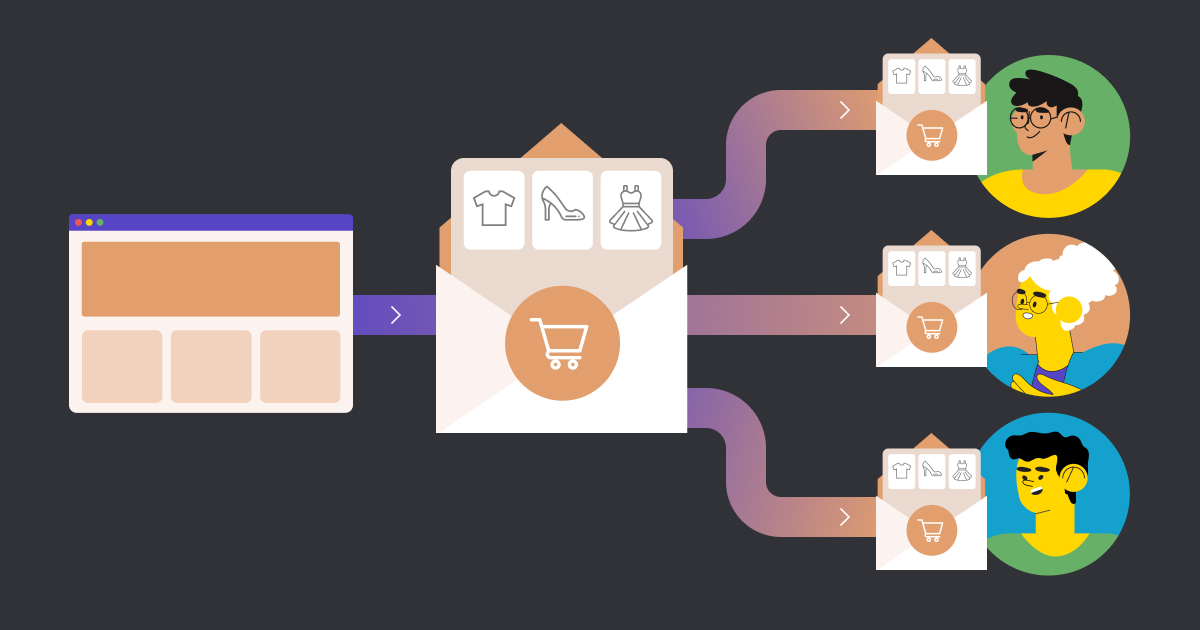
For example, let’s say a customer has a history of browsing workout gear on your site. You’ll be more likely to pique their interest and encourage them to explore your offerings further by showcasing similar products or new arrivals in that category. Implementing personalized product recommendations can significantly boost your CTRs, as customers are more inclined to engage with content tailored just for them.
Yayvo successfully increased its conversion rate by 8.27%, focusing on users with higher buying intent. They achieved this by utilizing WebEngage, a powerful marketing automation platform that allowed them to implement a personalized user journey. Let’s take a closer look at the key aspects of their strategy and how they made it work:
- Hyper-personalization: Yayvo understood the importance of personalization and tailored its messages to individual users based on their past behavior. By referencing the specific product a user viewed and abandoned, they increased the likelihood of a positive response and, ultimately, a completed transaction.
- Spam checks: Nobody likes getting bombarded with messages from the same company, right? Yayvo recognized this and avoided overwhelming their users by implementing spam checks. They filtered out users already part of another journey (in this case, the ‘Cart Abandonment Journey’) to ensure their marketing efforts remained focused and effective.
- Reachability checks before sending the message: Yayvo wanted to optimize its efforts by only sending messages to reachable users via their desired channel. By checking the reachability before sending a message, they removed unnecessary strain on their system and improved the overall user experience.
So, what can we learn from Yayvo’s success with WebEngage? It’s clear that personalization, avoiding spam, and ensuring reachability are essential components of a successful strategy to target users with high buying intent. By implementing these tactics, you, too, can optimize your CTRs and enjoy increased conversions in your e-Commerce business. Give it a try, and watch your numbers soar!
Strategy 2: Create buyer personas
Alright, folks, let’s move on to another fantastic strategy that can help you optimize your CTRs – creating buyer personas. This one is all about getting to know your audience and making your marketing campaigns more effective by tailoring them to specific customer groups. Let’s break it down:
First things first, you need to figure out who your target customers are. Start by analyzing data such as demographics, interests, and behavior patterns of your most engaged users. This information will help you identify the different customer segments that make up your audience.

Now that you’ve got a clear picture of your target customer groups, it’s time to create buyer personas. These are fictional representations of your ideal customers, complete with names, backgrounds, and even images if you feel creative! By crafting personas, you’ll be able to design marketing campaigns that resonate with each group, leading to higher engagement and better CTRs.
Imagine having a campaign specifically tailored to ‘Fitness Fanatic Fiona’ or ‘Gadget Guru Greg.’ By speaking directly to their interests and needs, you’ll increase their chances of clicking through and making a purchase. It’s like having a personal shopper for each of your customers!
Creating buyer personas can work wonders for your e-Commerce business by helping you identify target customer groups and customize marketing campaigns accordingly. So, don’t be shy – get to know your audience and let those buyer personas guide you to CTR optimization success!
ASOS, a British online fashion and cosmetic retailer, is an e-Commerce company that effectively uses buyer personas to maximize its CTRs. ASOS offers a wide range of products catering to different customer segments, such as young adults, professionals, and trend-conscious shoppers. To better target their audience, ASOS has created detailed buyer personas that represent their different customer groups. Here’s how they do it:
- Creating buyer personas: ASOS created detailed personas representing different customer groups, such as ‘Trendy Tina’ and ‘Budget-conscious Ben.’
- Targeted email marketing: ASOS sends customized email campaigns based on each persona’s preferences and interests, such as:
- For Trendy Tina: Newsletters featuring the latest arrivals, designer collaborations, or flash sales.
- For Budget-conscious Ben: Clearance sales, promotional discounts, or budget-friendly outfit ideas.
- Personalized product recommendations: ASOS offers tailored product suggestions based on each persona’s shopping habits.
- Tailored website experiences: The site caters to each persona’s interests and needs, creating a customized shopping journey.
By customizing their marketing efforts based on these buyer personas, ASOS has improved their CTRs, as customers are more likely to engage with relevant content tailored to their interests. This personalized approach has helped ASOS optimize its CTRs, build strong customer relationships, and drive long-term loyalty.
Strategy 3: Leverage seasonal trends and promotions
Next, let’s chat about a fun and effective way to optimize your CTRs – leveraging seasonal trends and promotions! I mean, who doesn’t love a good sale or holiday-themed promotion, right? Let’s dive into how you can make the most of these opportunities and watch your CTRs soar:
Keep an eye on the calendar and plan your marketing campaigns around major holidays, seasonal sales, and other events. Whether it’s Black Friday, Valentine’s Day, or even National Donut Day, there’s always a chance to tap into the excitement and create buzz around your e-Commerce store. Ensure you’re ready to roll out special offers, limited-time deals, or exclusive product launches that align with these occasions.
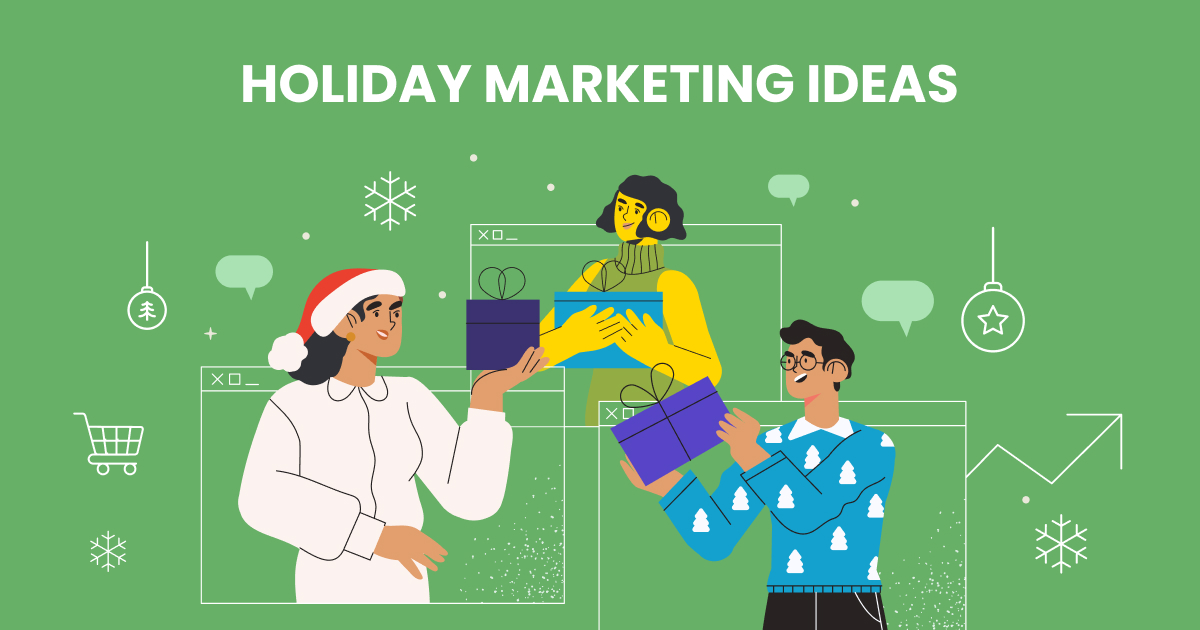
Remember to adjust your marketing campaigns to match the season or event. For example, during the winter holidays, you could send out festive email newsletters featuring gift ideas, holiday-themed product collections, or special discount codes. If you’re running a summer sale, you could promote it through eye-catching social media ads or a banner on your homepage. The key is ensuring your marketing efforts feel relevant and timely, increasing the chances that your audience will click through and explore what you offer.
By leveraging seasonal trends and promotions, you can capture your audience’s attention and create a sense of urgency that encourages them to click through and make a purchase. So, break out those calendars, brainstorm some creative promotional ideas, and get ready to optimize your CTRs like never before.
A fantastic e-Commerce company that has mastered the art of leveraging seasonal trends and promotions to maximize their CTRs – Amazon!
You’ve probably heard of Amazon (who hasn’t, right?), the global e-Commerce giant offering various products and services. One thing they do exceptionally well is capitalizing on seasonal trends and promotional events to boost their CTRs and drive sales. Here’s how they do it:
- Major sales events: Amazon is known for its blockbuster sales events, such as Prime Day and Black Friday, which generate massive buzz and excitement among shoppers. These events often include limited-time deals, exclusive product launches, and lightning sales that encourage customers to click through and make a purchase before it’s too late.
- Holiday-themed promotions: During the holiday season, Amazon steps up its game with festive marketing campaigns that feature gift guides, themed collections, and special discounts. They also offer services like gift wrapping and expedited shipping to make holiday shopping even more convenient and appealing.
- Seasonal product collections: Amazon regularly updates its homepage and product categories to showcase seasonal items and trends. Whether it’s back-to-school essentials, cozy winter must-haves, or summer beach reads, they know how to highlight the products that will resonate with their customers during different times of the year.
- Personalized recommendations: Amazon goes the extra mile by providing personalized product recommendations based on a user’s browsing and purchase history. This means that during seasonal events or promotions, customers are more likely to see deals and products that align with their interests, making them more inclined to click and shop.
By staying on top of seasonal trends and promotions, Amazon keeps its customers engaged and eager to discover what’s new and exciting. This strategy has undoubtedly played a significant role in their ability to maximize CTRs and maintain their status as an e-Commerce powerhouse.
So, there you have it! Amazon is a shining example of how an e-Commerce company can leverage seasonal trends and promotions to boost CTRs and delight customers. Why not take a page from their playbook and see how it works for your business?
Strategy 4: Optimize site navigation and user experience
Alright, my e-Commerce friends, it’s time to talk about another crucial strategy for optimizing your CTRs – optimizing your site navigation and user experience! Trust me, a smooth and enjoyable shopping experience can make all the difference when it comes to keeping those CTRs high. Let’s dive into some key points to consider:
You want to ensure that your customers can effortlessly navigate your website, find what they’re looking for, and complete their purchases without hiccups. This means having a clean, intuitive layout, easy-to-use search and filtering options, and quick-loading pages. The easier it is for users to browse and shop, the more likely they are to click through and make a purchase.
Your call-to-action (CTA) buttons should be clear, concise, and eye-catching, encouraging users to take the desired action (like adding an item to their cart or signing up for your newsletter). Ensure your website features like shopping carts, wishlists, and product comparisons are user-friendly and intuitive. A well-designed website can significantly impact your CTRs and overall conversion rates.
Last but definitely not least, consider personalizing your website to enhance the user experience even further. This could include personalized product recommendations, location-based offers, or custom homepage layouts based on a user’s browsing history. By tailoring the experience to each individual visitor, you’ll increase the chances of them engaging with your site and clicking through to explore more.
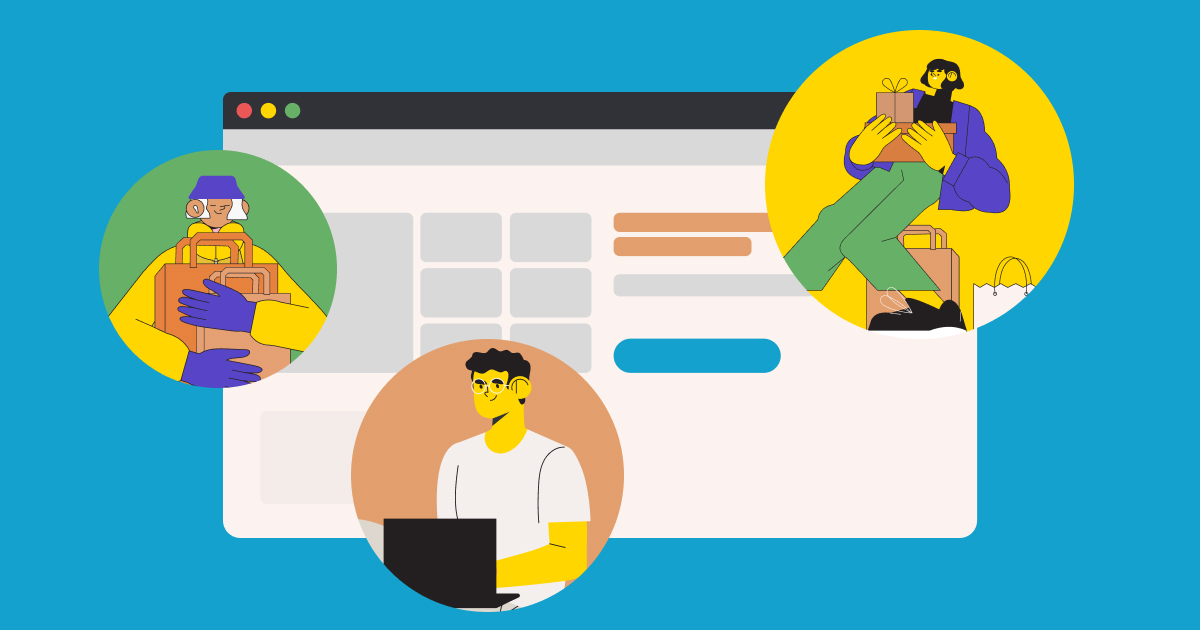
Optimizing your site navigation and user experience is a must to boost your CTRs and keep your customers returning for more. So, put on your web design hat, take a close look at your site, and make sure it’s as user-friendly and enjoyable to navigate as possible.
Let’s talk about Zappos, the popular online shoe and clothing retailer known for its exceptional user experience, site navigation, and personalization. They’ve done an amazing job optimizing their CTRs by focusing on these aspects:
- Seamless browsing and shopping experience: Zappos has mastered the art of making its website super easy to navigate. They have a clean and intuitive layout, with well-organized product categories and filters that help shoppers quickly find what they’re looking for. Plus, their site loads quickly, ensuring customers can browse and shop without frustrating delays.
- Clear CTAs and easy-to-use website features: Zappos doesn’t shy away from making its CTAs stand out. Whether it’s an ‘Add to Cart’ button or a prompt to sign up for their rewards program, their CTAs are clear, concise, and visually appealing. They also offer user-friendly features like saved shopping carts, extensive product reviews, and one-click reordering, making the shopping experience a breeze.
- Website personalization: Zappos takes personalization seriously, offering customers tailored product recommendations based on browsing history and previous purchases. They also have a ‘My Favorites’ feature that allows users to save and quickly access their favorite products or brands. This level of personalization ensures that customers feel valued and understood, making them more likely to engage with the site and click through to explore further.
By prioritizing site navigation, user experience, and personalization, Zappos has created an online shopping environment that keeps customers engaged and coming back for more. Their attention to detail and commitment to providing a top-notch user experience has certainly played a major role in optimizing their CTRs and achieving success in the competitive e-Commerce market.
Strategy 5: Test and optimize ad creatives
Are you ready for another super helpful tip to boost your CTRs? Let’s chat about the art of testing and optimizing your ad creatives. I know it might sound a bit technical, but trust me, it’s an essential part of any successful marketing strategy. So, let’s dive into some key points on how to make your ads shine:
You’ve probably heard the saying, “You never know until you try,” right? Well, that’s especially true when it comes to ad creatives. A/B testing (also known as split testing) involves creating multiple versions of an ad with slightly different elements, like images, headlines, ad copy, or CTAs. By running these variations simultaneously and comparing their performance, you can identify which resonates best with your audience and drives the highest CTR.
Once you’ve gathered some data from your A/B tests, it’s time to put that information to good use! Analyze the results to see what worked well and what didn’t, and use those insights to refine your ad creatives. This iterative testing, analysis, and improvement process will help you fine-tune your ads for maximum impact, resulting in higher CTRs and better overall performance.

In a nutshell, testing and optimizing your ad creatives is a must if you want to make the most of your marketing efforts and boost those CTRs. You can create a more engaging and effective advertising strategy by continually experimenting with different elements and refining your ads based on the results. So, go ahead and channel your inner scientist, and start testing your way to success.
Let’s talk about another e-Commerce superstar optimizing their CTRs like a boss through A/B testing and ad iteration – Wayfair, the online home goods and furniture retailer. They’ve been making waves in the industry with their data-driven approach and commitment to ad optimization. So, let’s dive in and see what makes their strategy so successful:
- Testing various ad elements: Wayfair understands the importance of experimentation and leaves no stone unturned when it comes to A/B testing. They test everything from images and headlines to ad copy and CTAs across multiple channels, including Facebook, Instagram, and Google Ads. By doing this, they’re able to pinpoint which ad elements resonate best with their audience and drive the highest engagement.
- Data-driven ad improvements: Wayfair doesn’t just run tests for the sake of it – they use the valuable insights gathered from their A/B tests to make informed decisions about their ad creatives. By analyzing the results and identifying trends and patterns, they’re able to iteratively refine their ads to better align with their customers’ preferences and interests.
- Adaptive and agile approach: What sets Wayfair apart is its adaptive and agile mindset when it comes to ad optimization. They’re not afraid to pivot and make changes based on the data they collect, ensuring that their ads stay fresh, relevant, and engaging. This approach has been instrumental in helping them achieve impressive CTRs and grow their business.
Wayfair is another shining example of an e-Commerce company nailing its ad optimization game through A/B testing and iterative ad improvements. Their commitment to data-driven decision-making and an adaptive approach has played a significant role in their success. If you want to optimize your own CTRs, take a leaf out of Wayfair’s book and let the testing begin!
Strategy 6: Utilize Machine Learning for customer insights
Ready for another exciting strategy to boost those CTRs? Let’s dive into the fascinating world of machine learning and see how it can help you unlock valuable customer insights. Trust me, it’s not as intimidating as it sounds! So, let’s explore the key points on how machine learning can elevate your e-Commerce game:
Machine learning is all about teaching computers to learn from data and identify patterns, which is a game-changer when it comes to understanding your audience. By using machine learning algorithms, you can sift through mountains of customer data to uncover valuable insights, like preferences, trends, and purchase behavior, which can help you make smarter marketing decisions.
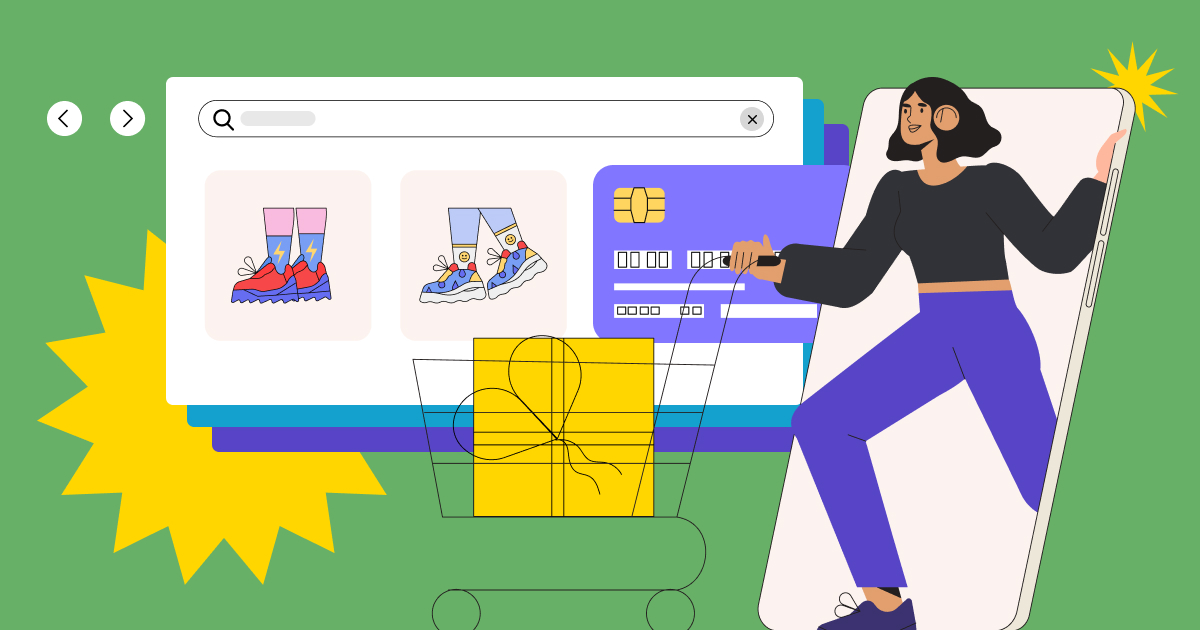
One of the most powerful aspects of machine learning is its ability to predict future customer behavior based on past data. By analyzing historical trends, machine learning algorithms can help you anticipate what your customers will likely do next. This means you can tailor your marketing campaigns and ad creatives to align with their predicted behavior, ultimately optimizing your CTRs and driving better results.
In summary, utilizing machine learning for customer insights is an incredibly potent strategy for e-Commerce businesses looking to optimize their CTRs. By leveraging advanced algorithms to analyze audience data and predict customer behavior, you’ll be able to make more informed decisions about your marketing campaigns and ad creatives. So, don’t be afraid to embrace the power of machine learning – it could be the secret weapon you need to take your e-Commerce game to the next level.
Let’s consider Zalando, Europe’s leading online fashion and lifestyle platform, which has been using machine learning to gain customer insights and optimize its CTRs. Zalando has been at the forefront of data-driven personalization and customer-centricity, and their use of machine learning plays a big role in their success. So, let’s see how they’re leveraging this technology:
- Tailored shopping experiences: Zalando uses machine learning algorithms to analyze customer data such as browsing behavior, purchase history, and preferences. By doing so, they can create tailored shopping experiences with personalized product recommendations for each user. This level of customization leads to more engaging marketing campaigns and ad creatives, resulting in higher CTRs.
- Size and fit predictions: Zalando also employs machine learning to improve size and fit predictions for their customers. By analyzing customer data and feedback, they can provide more accurate size recommendations, reducing the likelihood of returns and increasing customer satisfaction. When customers are more confident in their purchase decisions, they are more likely to engage with marketing content, boosting CTRs.
- Trend forecasting and inventory management: Machine learning plays a critical role in Zalando’s trend forecasting and inventory management. By analyzing historical sales data, customer behavior patterns, and fashion trends, their algorithms can predict product demand and help ensure they have the right items in stock. This not only streamlines their operations but also allows them to better target their marketing efforts, resulting in optimized CTRs.
Zalando is a fantastic example of an e-Commerce company that’s successfully using machine learning to gain valuable customer insights and optimize its CTRs. Their innovative approach to personalization, size, and fit predictions, and demand forecasting has been a major factor in their success. If you want to enhance your own CTRs, consider exploring the power of machine learning and see what it can do for your e-Commerce business.
Strategy 7: Employ retargeting and lookalike audiences
Are you ready to dive into yet another fantastic strategy to give your CTRs a serious boost? Let’s talk about retargeting and lookalike audiences – two powerful tactics that can help you reconnect with potential customers and expand your reach. So, buckle up, and let’s explore how these strategies can take your e-Commerce marketing to new heights:
Retargeting is all about reconnecting with customers who have already interacted with your brand, like browsing your products, adding items to their cart, or even making a purchase. By serving targeted ads based on their past behavior, you can remind them of their interest and entice them to return and complete a purchase, leading to higher CTRs and conversions. It’s like giving them a gentle nudge, saying, “Hey, remember us? We’ve got just what you were looking for!”

Predictive segmentation takes retargeting to the next level by using machine learning algorithms to analyze customer data and predict their future behavior. You can create more focused retargeting campaigns that deliver better results by identifying high-value customers or those most likely to convert. And who doesn’t love a smarter marketing strategy?
Now that you’ve got retargeting down, let’s talk about lookalike audiences – another game-changing tactic. Lookalike audiences are created by analyzing your existing customer base and finding new, potential customers who share similar traits and behaviors. By targeting these ‘lookalikes,’ you can expand your reach and tap into a new pool of customers who are more likely to engage with your brand and boost your CTRs. It’s like discovering a hidden treasure trove of potential customers!
In summary, employing retargeting and lookalike audiences is a fantastic strategy for e-Commerce businesses looking to optimize their CTRs and drive better results. By reconnecting with interested customers, using predictive segmentation, and expanding your reach with lookalike audiences, you’ll be well on your way to e-Commerce marketing success. So, go ahead and give these strategies a try – you might just be surprised by the results!
A cool e-Commerce company that’s been crushing it by optimizing its CTRs through retargeting, predictive segmentation, and lookalike audiences is the stylish eyewear brand, Warby Parker. With their trendy frames and innovative marketing strategies, they’ve become a standout name in the e-Commerce space. So, let’s see how they’re acing the retargeting game and expanding their reach with lookalike audiences:
- Retargeting success: Warby Parker is known for their savvy retargeting efforts. They create targeted ads for customers who’ve previously browsed their website, engaged with their content, or even tried on frames using their virtual try-on tool. By serving personalized ads to these potential customers, Warby Parker reminds them of the fantastic eyewear they’ve left behind, encouraging them to come back and complete their purchase. This smart retargeting has led to higher CTRs and boosted their conversion rates.
- Predictive segmentation: Warby Parker takes retargeting one step further by utilizing predictive segmentation. By analyzing customer behavior and identifying patterns, they can better understand which customers are more likely to convert. This enables them to create even more targeted retargeting campaigns, focusing their marketing efforts on high-value customers and ultimately improving their CTRs.
- Reaching new heights with lookalike audiences: Warby Parker doesn’t stop at retargeting; they also tap into the power of lookalike audiences. They can find new potential customers who share similar traits and behaviors by analyzing their existing customer base. This strategy allows them to expand their reach and target a whole new audience of potential eyewear enthusiasts, leading to higher CTRs and even more happy customers.
Warby Parker is a fantastic example of an e-Commerce company that’s successfully optimizing its CTRs by employing retargeting, predictive segmentation, and lookalike audiences. Their innovative approach to reaching both existing and new customers has undoubtedly played a major role in their success. So, if you’re looking to give your own CTRs a boost, take a page out of Warby Parker’s playbook and explore these powerful strategies.
Conclusion
And there you have it, folks! We’ve worked our way through seven fantastic strategies to help you optimize your CTRs as an e-Commerce player. Just to recap, we’ve covered personalizing product recommendations, creating buyer personas, leveraging seasonal trends and promotions, optimizing site navigation and user experience, testing and optimizing ad creatives, utilizing machine learning for customer insights, and employing retargeting and lookalike audiences. Whew! That’s a lot of marketing magic right there!
But don’t just take our word for it – go ahead and give these strategies a try in your own e-Commerce business. And to make things even easier, consider using a powerful marketing automation tool like WebEngage to help you boost your CTRs. WebEngage can streamline your marketing efforts, provide valuable insights, and make personalization a breeze, giving your brand the edge it needs to succeed.
So, what are you waiting for? Dive in and explore the amazing features WebEngage has to offer, and watch your CTRs soar to new heights. Remember, the key is to stay curious, keep learning, and always be ready to adapt to new trends and technologies. With WebEngage by your side, you’ll be well on your way to e-Commerce marketing success.
Take a demo today and experience the difference for yourself.

































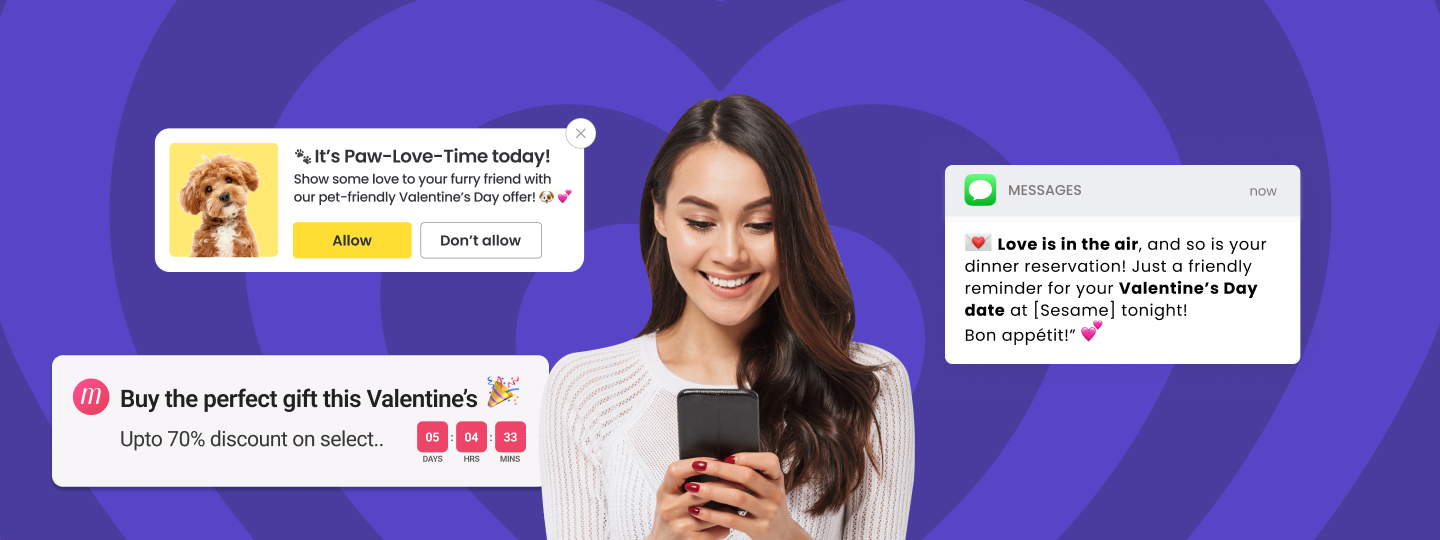

 Kasturi Patra
Kasturi Patra
 Surya Panicker
Surya Panicker



